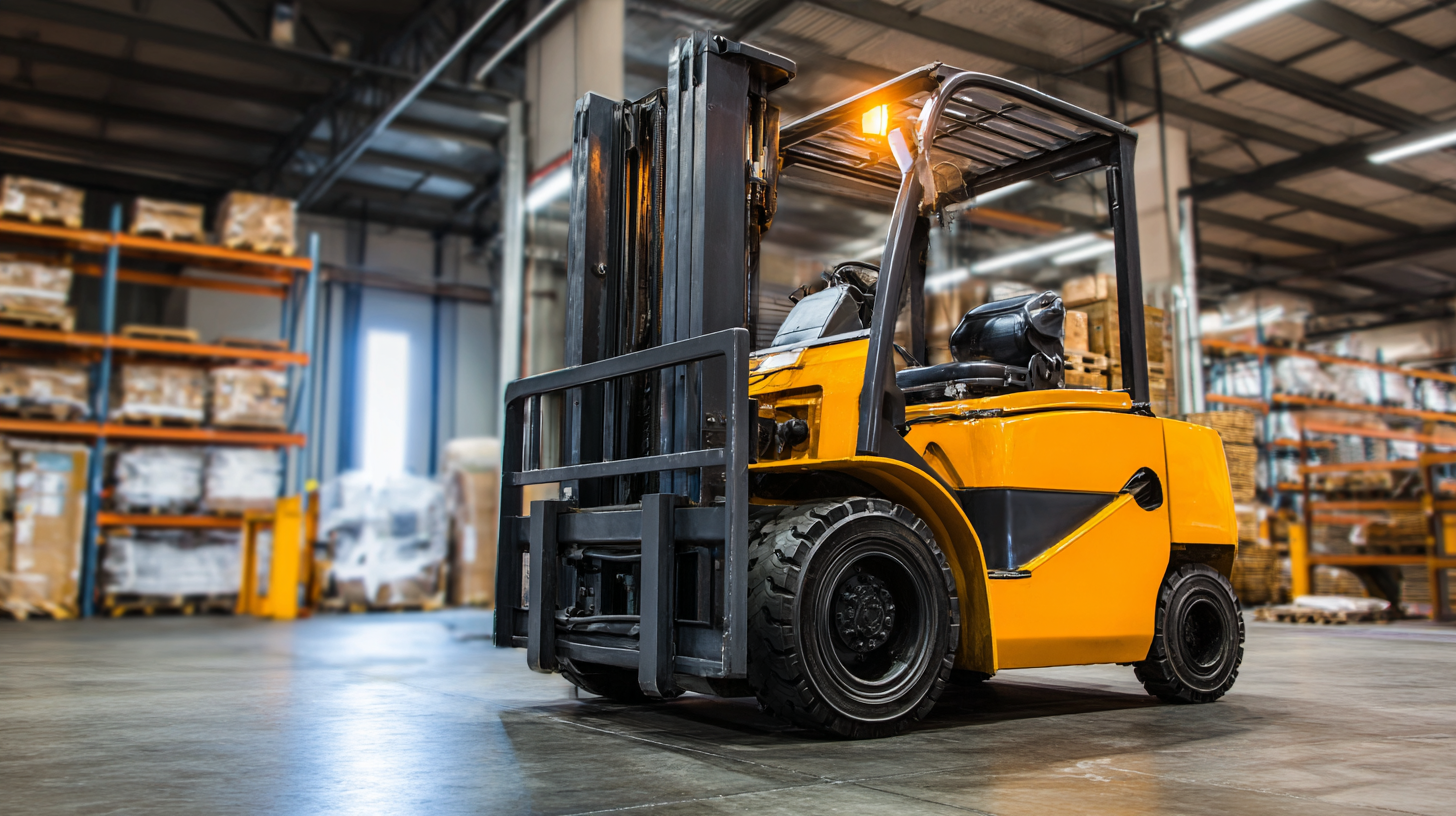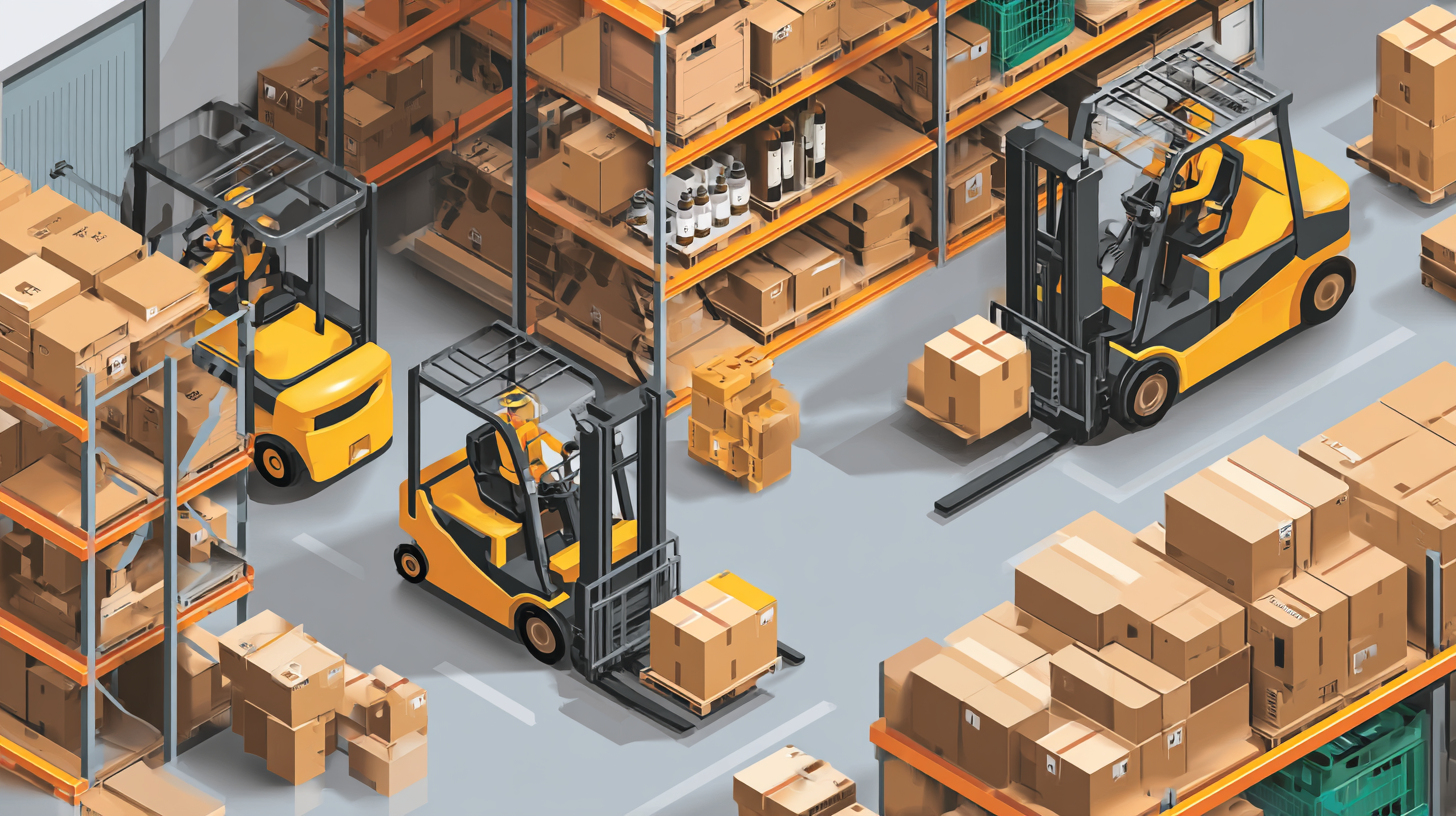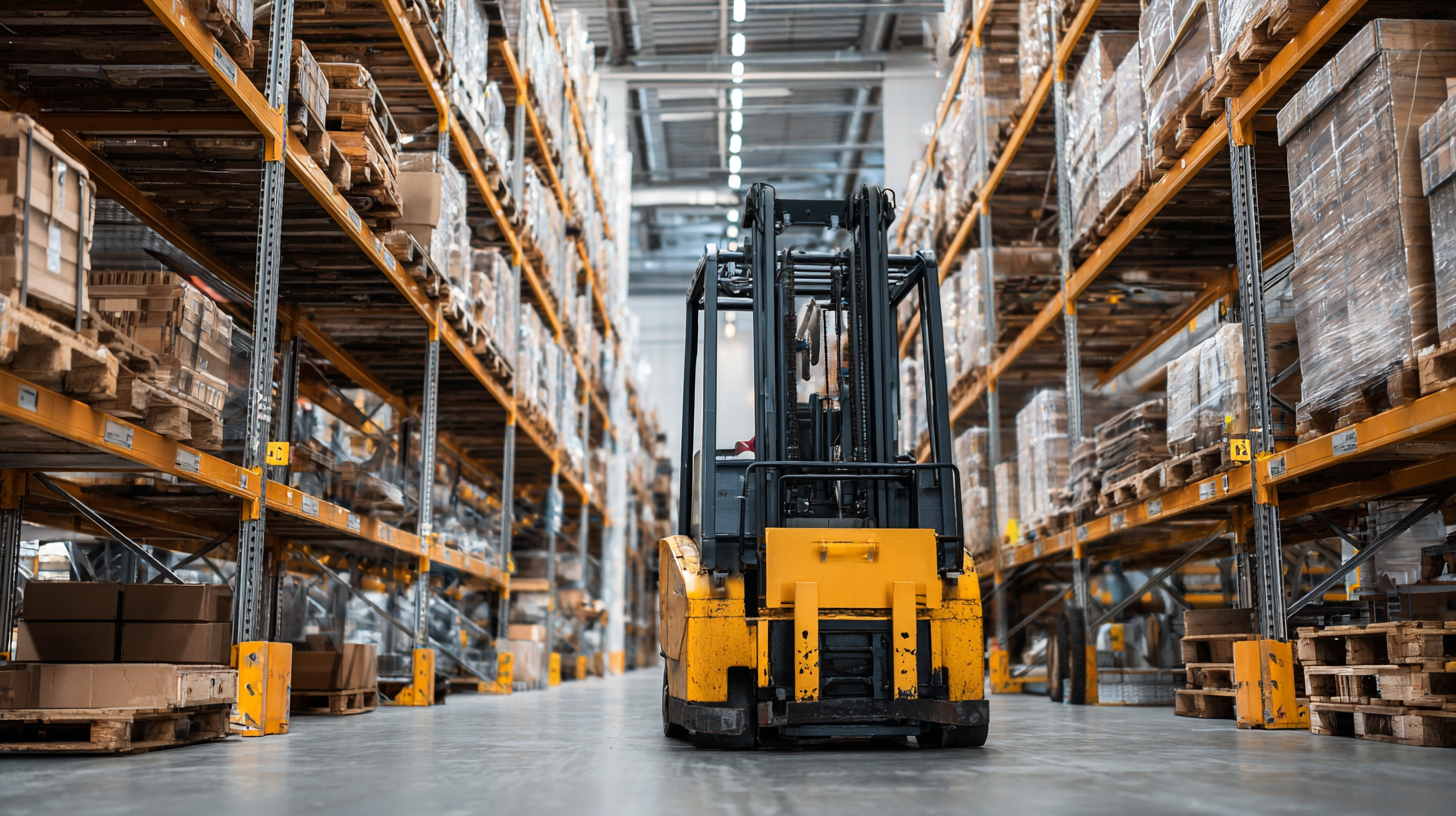The Ultimate Guide to Choosing the Best Fork Lift for Your Warehouse Needs
When it comes to optimizing the efficiency of your warehouse operations, choosing the right equipment is crucial, and one of the most essential pieces of machinery is the fork lift. This versatile vehicle is designed to handle various lifting and transporting tasks, making it a vital asset in any warehouse setting. With numerous types of fork lifts available, each suited to specific needs, selecting the best one can be a daunting challenge. Whether you’re looking for a compact electric fork lift for tight spaces or a robust gas-powered model for heavy-duty tasks, understanding the unique features and capabilities of each type is key to making an informed decision. In this ultimate guide, we will explore the different examples of fork lifts, their advantages, and how to assess your warehouse requirements to ensure you invest in the optimal fork lift that will enhance productivity and safety in your operations.

Understanding Your Warehouse Requirements for Fork Lift Selection
When selecting the best forklift for your warehouse, it's crucial to start with a clear understanding of your specific operational requirements. Every warehouse has unique features, such as layout, storage types, and the volume of goods handled, which influence the choice of forklift. For instance, narrow aisles may necessitate a compact, maneuverable forklift, while high storage ceilings may require a model with an extended reach capability.
Additionally, consider the types of materials you will be lifting. Different forklifts are designed to handle various weights and sizes, so assessing the load capacity is vital for safe operations. Furthermore, think about the environment in which the forklift will operate. Indoor vs. outdoor usage, surface types, and potential hazards should guide your selection process. By thoroughly analyzing these factors, you can ensure that your forklift choice aligns perfectly with your warehouse needs, enhancing efficiency and productivity.
The Best Forklift Types for Warehouse Needs
This chart shows the popularity of different types of forklifts based on their suitability for various warehouse tasks, including load capacity and maneuverability.
Evaluating Different Types of Fork Lifts for Optimal Performance
When it comes to optimizing warehouse efficiency, selecting the right type of forklift is crucial. Each warehouse has unique requirements based on layout, load types, and operational workflows. For instance, electric forklifts are esteemed for their low maintenance costs and eco-friendliness, making them ideal for indoor use—where air quality is a concern. According to a recent industry report by the Material Handling Industry of America (MHIA), electric forklifts account for approximately 60% of the market due to their rapid integration in modern warehousing solutions.
A practical tip for potential buyers is to assess the lift’s capacity against the maximum load weight they expect to handle. For example, reach trucks are specifically designed for narrow aisle conditions and can lift loads up to 30 feet, but they may not be suited for heavier pallets. Conversely, rough terrain forklifts are built for tough outdoor applications, handling uneven surfaces and higher weight limits effectively. Understanding these differences ensures optimal performance tailored to your operational needs.
Another key consideration is the type of material handling you engage in. For operations that require high maneuverability, the use of pallet jacks or order pickers might be more appropriate. According to the Warehousing Education and Research Council (WERC), investing in the right forklift type can improve productivity by up to 25%. Therefore, evaluating each type thoroughly based on your specific warehouse needs is essential for maximizing both efficiency and safety.
Key Features to Look for in Quality Fork Lifts
When selecting a quality forklift for warehouse operations, several key features should be prioritized to ensure efficiency and safety. Firstly, consider the type of power source. Electric forklifts are becoming increasingly popular due to their low emissions and reduced noise levels, making them ideal for indoor use. Lithium-powered options are particularly noteworthy, as they offer faster charging times and longer operational life, which can greatly enhance productivity.
Another crucial feature is the design and ergonomics of the forklift. A well-designed forklift ensures ease of operation, reducing fatigue for operators. Look for models with adjustable seating, intuitive controls, and excellent visibility to enhance comfort and safety during operation. Additionally, safety features such as automated braking systems and advanced monitoring technologies can help prevent accidents and protect both the load and the facility. Investing in a forklift that combines these features not only boosts efficiency but also contributes to a safer working environment.
The Ultimate Guide to Choosing the Best Fork Lift for Your Warehouse Needs - Key Features to Look for in Quality Fork Lifts
| Feature | Importance | Recommended Specification | Notes |
|---|---|---|---|
| Load Capacity | Critical for safe operation | 3000-5000 lbs | Ensure capacity meets typical load sizes |
| Lift Height | Important for storage solutions | Up to 20 feet | Consider ceiling height in warehouse |
| Power Source | Affects operating cost and environment | Electric or Diesel | Electric is better for indoor use |
| Maneuverability | Essential for tight spaces | Compact design with a small turning radius | Required for crowded storage areas |
| Operator Comfort | Impacts productivity and safety | Adjustable seat and controls | Consider user ergonomics |
| Visibility | Critical for safe operation | Clear mast and overhead guard design | Enhances safety in busy environments |
Top Brands in Fork Lift Manufacturing: Reliability and Innovation
When it comes to selecting a fork lift for your warehouse needs, understanding the brands that lead the industry in reliability and innovation is crucial. According to a recent report by the Industrial Truck Association, the North American fork lift market is projected to grow by 2.5% annually, indicating an increasing demand for quality products. Leading manufacturers such as Toyota Material Handling, Crown Equipment, and Hyster-Yale have consistently been acknowledged for their commitment to advanced engineering and rigorous safety standards. Toyota, in particular, has received numerous accolades for its Lean manufacturing practices, which not only enhance productivity but also ensure sustainability in operations.

In terms of innovation, many brands are making significant strides in technology integration within their fork lifts. For instance, Crown Equipment has invested heavily in automated solutions, with their recent advancements in pedestrian and semi-autonomous fork lifts expected to set new industry benchmarks. Similarly, Hyster-Yale's focus on electric fork lifts has led to improved energy efficiency and lower operational costs, aligning with the industry's shift towards more sustainable practices. As these top manufacturers continue to push the envelope, warehouse operators must stay informed about the latest trends and features that can enhance their operational efficiency and safety.
Cost vs. Quality: Making the Right Investment in Fork Lifts
When considering the purchase of a forklift for your warehouse, the balance between cost and quality is paramount. According to a recent report by the Industrial Truck Association, warehouses that invest in higher-quality forklifts can experience a 15% increase in operational efficiency compared to those that opt for lower-cost alternatives. While the initial price tag may be higher for premium models, the long-term benefits often outweigh upfront savings. A well-built forklift can reduce maintenance costs, minimize downtime, and enhance safety protocols—essentially leading to a healthier bottom line.
Furthermore, the decision to invest in quality forklifts aligns with data from a 2022 market analysis indicating that the total cost of ownership (TCO) is heavily influenced by the lifespan and reliability of the equipment. Quality forklifts are known to last up to 25% longer than their cheaper counterparts. For businesses handling heavy loads or operating in high-demand environments, investing in durable equipment not only meets immediate needs but also supports future growth and stability. This ensures that your investment is sound in both the short and long term, making quality a critical factor in your forklift purchasing decision.












